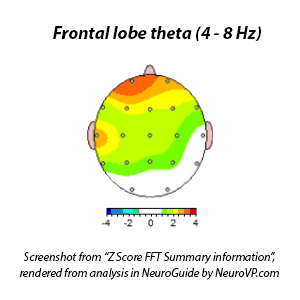Scientific and without medication
The QEEG Neurofeedback therapy we use for ADHD, ADD or concentration problems is scientific and non-invasive. Nothing is added to the brain. Neurofeedback works according to the principle of operant conditioning. We are going to reward the brain when it shows the desired behaviour. In this way we can help with ADHD, ADD or concentration problems, even without medication.
Neurofeedback therapy is a training
Neurofeedback therapy is therefore a form of training. We are going to identify the causes of ADHD, ADD or concentration problems and train them away. When the neurofeedback therapy is successfully completed, people have taught themselves to concentrate better, to stop being hyperactive, to be less anxious,… The result of neurofeedback therapy is an acquired skill.
Individually tailored, for adults and children
Neurofeedback can help both adults and children with ADHD, ADD or concentration problems. Children are welcome from about 6 years old. Each of our clients has a fully personalised training protocol.
ADHD or ADD is not someone’s “fault”, it’s a deviation
Our measures and analyses can prove that ADHD, ADD and concentration problems are neither the fault of the parents, nor the fault of the child. It is a deviation from peers in the electrical activity and can be targeted for training.








